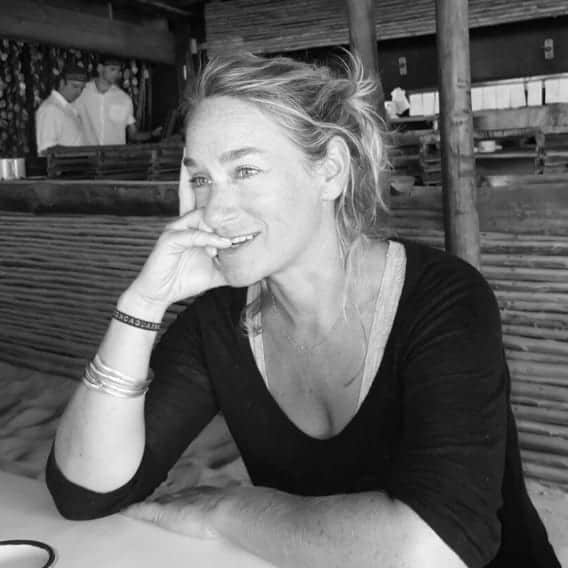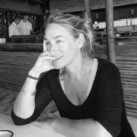
MysticMag has the opportunity to chat with JJ Gormley, Director of the Surya Chandra Healing Yoga School. We take a look at their approach to teaching yoga, their philosophy, retreats and practice.
How and when was the Surya Chandra Healing Yoga School first conceived and how has it grown throughout its journey?
I first started a yoga studio called Sun and Moon Yoga in 1992 in Arlington, VA. In 2005 I moved to Montana and turned the studio over to a teacher to continue running it, but I wanted to continue the teacher training programs.
Surya Chandra means Sun and Moon in Sanskrit and so that was the perfect name for a school that trains yoga teachers. Today it has grown to focus mostly on training existing yoga teachers to become yoga therapists. A yoga teacher takes a minimum of 200-hours to train, but a Yoga Therapist is a minimum of 900-hours (on top of the 200-hrs) in Surya Chandra Healing Yoga School’s program. A yoga teacher learns to teach in the classroom to groups while the Yoga Therapist works with a client one-on-one.
What role does ‘God’ play in your practice, if any?
At SCHYS (we pronounce this skies), we teach that yoga is for all beings, all levels, all beliefs and all abilities. My teacher is famous for saying that “if you can breathe, you can do yoga”. Basically, if you are alive you can do yoga—simply breathing mindfully is yoga. Because of this we do not “teach” God in practice for students. Rather we ask the student about their own spiritual practice and then whatever we can do to enhance that, we will. For example, creating the space or time in their practice where they deepen their relationship to their belief system.
In my personal practice, I have a strong belief in a Higher Power. I do use the word God to refer to this Universal Power since that is the language used in my upbringing. I meditate daily, linking with God and I use prayer as well.
What can you tell us about your retreats, and why do you believe they differ from others?
First, I differentiate between a yoga retreat and a yoga vacation. A yoga vacation is going to some exciting place(s) and doing yoga practice together daily while at the same time exploring the sites, culture and cuisine. In many ways, it is more about the vacation than the yoga.
A yoga retreat on the other hand, is more about the yoga. The retreat is a place to delve deeper into the subtle practices of yoga. My retreats often have a theme or a main focus such as meditation, prāṇāyāma (breathing), mudrā &/or bandha (energy work), etc., or sometimes the focus is on yoga therapy.
Each retreat is different, and each location brings its own gifts. One of my favorite places is two hours outside Nashville, TN, called Gray Bear Lodge and Retreat Center. This place is almost off the grid, so it allows for disengaging from the internet and cell phone world, allows a time to tune into Nature and offers beautiful walking paths, quaint cabins, and one of the most beautiful yoga spaces I have ever taught in. Gray Bear does have electricity and indoor plumbing—lest you get the wrong idea. Gray Bear’s gifts take the students who attend to a deeper place inside themselves, allowing them to see life differently, often for the first time they have the space to feel something, and they open to this, so by the end of the retreat, folks are in a really beautiful space in their hearts.
In your opinion and experience, how does the regular practice of yoga enhance one’s life, spiritually, energetically, mentally, and other? And is this attainable for everyone?
I have seen many students have a shift in their very first yoga class, so if that can happen in just one class, one experience of yoga, think what a regular practice would do! I believe yoga begins to balance the nervous system, particularly the sympathetic and parasympathetic nervous systems. These two nervous systems (SNS and PNS) are opposites. One is linked to activity related to stress and is nicknamed the ‘fight or flight’ response system. This is the SNS and many of us in today’s modern and stressful lifestyle remain in the SNS and have a difficult time relaxing—which is the PNS. The PNS is nicknamed the ‘rest and digest’ system and is generally more active at night when we sleep, or anytime we relax—as we do in yoga.
For many of us, practicing bringing up the PNS system daily gives a chance for us to restore from daily stressors. For some, this restoration puts things in perspective, we learn about balance in our lives, and what is truly important. This enhances one’s life on all levels: spiritually, energetically, mentally, and physically.
You describe SCHYS’ approach to teaching yoga and yoga therapy as ‘inclusive teachings and inclusive language’ – can you quantify?
Yes, you may have been in yoga classes where the teacher makes statements like, “stay longer”, “take it further,” and gives cues about what the pose “should look like.” At SCHYS we encourage students to find their own pose. We teach that no two people will feel the pose the same, nor look the same in the pose, so it does not help to compare yourself with another.
Because my teacher taught that if you can breathe, you can do yoga, we believe that anyone can do yoga, simply find the yoga that works for you. The word yoga simply means to link or unite with something. Whatever you link with is your yoga. If you link with your breath, that is stay mindful of each breath, then that is your yoga.
Yoga’s purpose is to calm the mind. If the yoga that one practices is not calming, but rather putting one in our ego-space where we start to compare ourselves with others, wish we could do such and such a pose better, then the yoga is having an adverse effect. At SCHYS, we try to adjust the yoga to fit the needs of the student so that the end result is a calm mind, and not a mind that is more stirred up than it was to begin with. Anyone can calm their mind, no matter their station in life, age, sexual orientation or body size.
What lies ahead for SCHYS?
Well, I wish I had a crystal ball to answer that one!
Right now, we have SCHYS programs in a few locations: Chicago, IL, Culpeper, VA, Charlottesville, VA, and Carolina Beach, NC. I would like to see SCHYS expand to more locations offering more programs. We have fantastic faculty that could easily handle double the programs we currently have and I am training new faculty, so SCHYS will be ready to grow.
I can also say that as I continue to learn and grow, I am constantly updating the training programs to keep up with new knowledge I obtain. Since SCHYS is focused more on Yoga Therapy, I am constantly researching how yoga has been studied to help with various ailments or issues. I often get a new student/client who has some ailment/disease/issue that I have never worked with or even heard of before. I research the issue to see if anyone else has used yoga successfully and if so, what were the tools they used.
Often, I come up empty-handed as yoga research is fairly new, and in this case I rely on the models of Yoga Therapy to help me find the best tools to use. There are many models used in Yoga Therapy that help the Yoga Therapist see the client in a holistic way. The Chakra Model—many have heard of, and the Pancha Maya Model are two of my favorites.
The Pancha Maya Model sees a minimum of five layers to the human being: the physical body, the energetic body, the mental/thinking body, the layer of the personality, and the emotional/spiritual body. When I study the client through these two models, I often get a good idea of what might best help the client. This is the basis of the Yoga Therapy program.
If you would like to find out more about SCHYS, visit https://www.schys.yoga/



